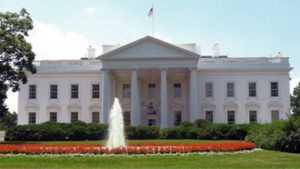Inside D.C.
Tariff Tirade — Genius or ?

I hate to say this – I know the trade junkies in town will want to smack me silly for saying it – but I’m almost beginning to enjoy how President Trump handles trade policy. Not that I agree with the specifics of some of his pronouncements, but the process by which he gets from Point A to Point B fascinates and entertains me.
What some see as genius, some find frightening and frustrating. The increasingly familiar administration strategy – threaten the worst to up the chances of producing the best – routinely has the president brushing off warnings of global trade wars. Such events are “easy to win,” he tweeted at one point. Agriculture sees trade policy schizophrenia as risky; sweeping action, accompanied by flag waving, but which ultimately exposes ag to a blitz of costly retaliatory tariffs from trading partners despite the president’s professed affection for rural America.
The last 10 days of the steel and aluminum tariff kerfuffle are a good example. On March 2, the president shocked industry, Congress and his own inner circle by dropping the bunker buster of trade bombs, announcing his intent beginning March 23, to impose 25% tariffs on all steel imports to the U.S., along with a 10% tariff on all aluminum imports, citing “national security” as his raison d’etre. His folks explained Sec. 232 of the Trade Expansion Act of 1962, gives Trump authority to “investigate” U.S. imports to determine if a product or products negatively impact “national security.” Trump said his steel/aluminum decision is predicated on the outcome of a nine-month Department of Commerce (DOC) investigation finding U.S. steel imports are four times this country’s exports, and aluminum imports made up 90% of total domestic demand for primary aluminum.
The president’s primary target is Chinese steel exports, which domestic industry contends have flooded world markets and driven down prices. Chinese production alone surpasses that of the U.S., Russia, Japan and the European Union (EU) combined. Trump’s hoped-for secondary “win” is leveraging NAFTA 2.0 negotiations to include more U.S. priorities by forcing Canada to see the wisdom of several U.S. positions. Canada, after all, is the number one steel exporter to the U.S.; Mexico is number four.
Within a week, however, Trump’s set-in-stone position on global steel/aluminum tariffs morphed into what some analysts call a very elaborate and melodramatic “warning” to U.S. trade partners. Despite declarations of “I won’t back off,” “no exceptions,” and “this will move forward,” the president explained to the press before a weekly cabinet meeting that the national security predicate of his tariff move gives him “a right to go up or down (with tariff rates) depending on the country, and I’ll have the right to drop out countries or add countries – we just want fairness.” Let the international steel/aluminum tariff exclusion scramble begin.
Key to the Trump strategy is to keep trade partners guessing as to just how serious is the White House in seeking to punish nations it believes are taking unfair advantage of U.S. markets. Agriculture Secretary Sonny Perdue said, “He’s got some countries just where he wants them,” meaning major trading partners are “off-balance” as to the real meaning of actions like the steel/aluminum tariffs. “Let’s use this off-balance technique to decide what we’d like in exchange…whether it’s with Mexico, Canada or EU partners,” the ag secretary elaborated.
Perdue, a consistent voice of reason over time in White House trade tug-of-wars and a cabinet secretary not timid in reminding Trump for whom farmers and ranchers voted in 2016, said producers are “rightfully concerned” about trade partner retaliation against agriculture exports, but said “If this has an impact on us completing a beneficial NAFTA deal for U.S. producers, that’s a great result. We’ve got a lot of flexibility built into the tariffs. We’re going to use this to get NAFTA done,” Perdue said.
Trump compounded the situation when he casually mentioned Canada and Mexico will escape the tariffs. His formal pronouncement included word Canada and Mexico received exemptions for at least 30 days because “if we reach a deal (on a new NAFTA treaty), we won’t be charging those two countries the tariffs.” This translates to the Trump version of “our way or the highway,” when it comes to a final NAFTA agreement on ag issues, including Canadian dairy pricing and supply management, Mexican seasonal fruit/vegetable anti-dumping complaints and Canadian wheat export subsidies.
Other exempted nations, because of military relationships and the U.S.’s balance of trade, include Australia. “We have a very close relationship with Australia. We have a trade surplus with Australia,” Trump said. “We’ll be doing something with them. We’ll be doing something with some other countries. We’re going to be very flexible.”
And if a government can prove it has a mutual national security relationship with the U.S. and wants on to the so-called tariff “exclusion” list, it can petition the White House to plead its case. It’s expected this process will shift the 28-nation EU – either en bloc or nation by nation – onto the “exclusion” list, but in true Trump fashion, the EU will have to come on bended knee and petition for that consideration.
The EU, second only to China on the president’s trade abuser list, put together a provisional list of about $3.6 billion in U.S. products on which retaliatory tariffs could be slapped; about $427 million would be on agriculture and food products.
European Commission (EC) President Jean-Claude Juncker declared, “We will put tariffs on Harley-Davidsons, on bourbon and on blue jeans – Levi’s,” all products of key Republican states, with other provisional targets being steel products, orange juice, tobacco, rice and rice products, cranberries, peanut butter, dairy and other agricultural exports. Said Juncker of the effort, “This is basically a stupid process, the fact that we have to do this. But we have to do it. We can also do stupid.”

Add Comment